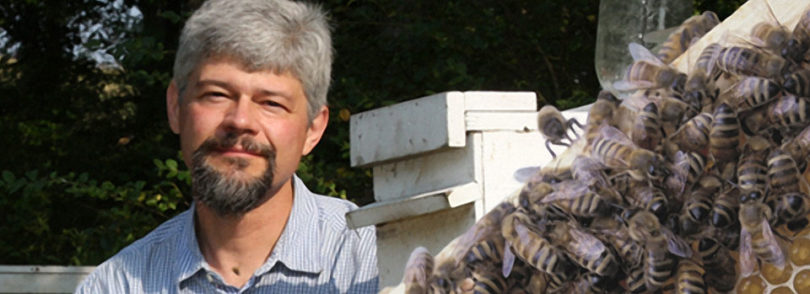Honeybee experts Keith Delaplane and Jennifer Berry often get calls about dead bees. They both say that in the winter, bee death in the 10 percent to 15 percent range isn’t unusual.
It’s the 50-percent colony losses that catch their attention.
“Every winter, beekeepers will lose a portion of their colonies due to bee starvation, mite problems or disease,” said Berry, the apicultural research coordinator with the University of Georgia College of Agricultural and Environmental Sciences.
“This year, what’s different is the number of colonies,” she said. “When you have beekeepers who have lost 90 percent of their colonies, and they’re commercial and good beekeepers, we know something’s wrong. We’ve had several people that I know have lost thousands of colonies.”
The U.S. Department of Agriculture came up with a name for this phenomenon, discarding last year’s “fall dwindling disease” for the term “colony collapse disorder.”
“I sometimes feel like the only tool I have in my bag is a hammer and therefore everything I see is a nail,” said Delaplane, a CAES entomology professor who specializes in honeybees. “A handful of diseases are easy to diagnose. When we run through all the normal lists and still don’t have the answer, we’re left with colony collapse disorder.”
For beekeepers nationwide, CCD is causing quite a headache this winter. The disorder has been identified in 22 states. The most extensive damage is in the South.
“I think what it is is all of the same problems we’ve been seeing in beekeeping, but more acute in last few months,” Delaplane said.
Honeybees pollinate about a third of U.S. crops, including almonds, peaches, soybeans, apples, raspberries, blackberries and strawberries. A Cornell University report in 2000 put the added value of that pollination, through higher yields and improved quality, at $14.6 billion that year.
In California, beekeepers bring colonies from as far away as Georgia to pollinate the $1.5-billion almond crop. “Georgia beekeepers move hundreds of colonies out to California for almond pollination,” Berry said.
Beekeepers also move for different honey crops, such as orange blossom in Florida and gallberry and tupelo in south Georgia. These migrating bee colonies, Berry said, have seen the most damage from colony collapse disorder.
She and Delaplane speculate that they may be picking up a protozoan disease called Nosema ceranae, which can kill a bee within eight days of infection. Its sister disease, Nosema apis, is a common bee disease in the U.S. It usually just weakens a colony and isn’t generally a problem in the South.
But there’s not enough information to pin CCD on any one disease.
“We still feel there are other things in combination: weather patterns, food amounts, contaminated equipment, overuse of pesticides and mite loads,” she said. Some of the problems could also be traced to beekeeper management and pesticide misuse in the beekeeping industry.





